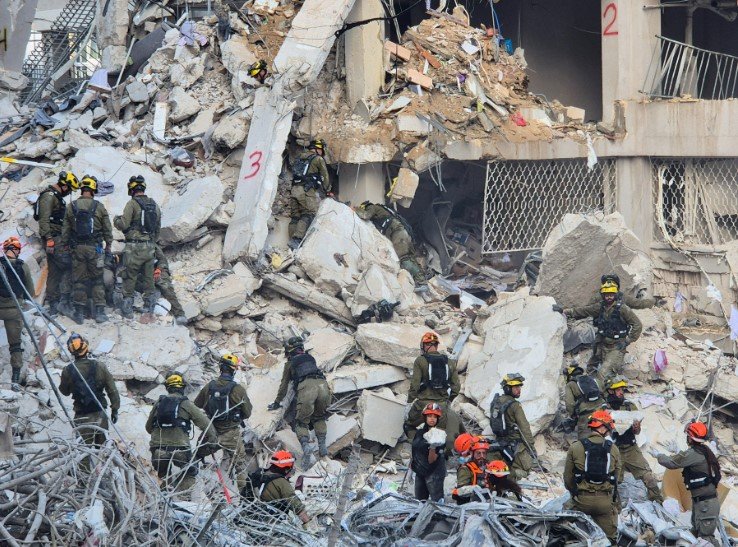Hours after explosions rocked Tehran and sirens wailed across central Israel, Iran’s foreign ministry tentatively nodded at a ceasefire—just as Washington claimed victory in brokering peace. But with no formal deal signed and missiles still flying mere minutes before the truce was meant to begin, the situation on the ground is anything but settled.
The fighting, now into its 12th straight day, has taken a sharp and surreal turn. Tehran is claiming calm “for now,” while at the same time warning of more retaliation if provoked. Israel, for its part, hasn’t said much. Not officially, anyway.
Missiles, Mayhem and Midnight Maneuvering
At around 3:00 a.m. local time, just an hour before the supposed ceasefire was set to kick in, northern Tehran lit up. Residents reported hearing jet engines overhead, followed by deep thuds that shook windows and nerves alike.
One witness described the noise as “relentless, like thunder that won’t stop rumbling.”
The Iranian government confirmed the explosions but said they were the result of “defensive operations.” No further clarification followed.
Just before that, U.S. President Donald Trump announced from the White House lawn that Israel and Iran had agreed to a “staggered ceasefire.” According to him, it was the result of “intense, backchannel diplomacy” led by U.S., Qatari, and Omani mediators.
Then again, Iran’s foreign ministry initially denied any deal existed at all.

Tehran Talks, But Leaves the Door Open
By mid-morning, Iranian Foreign Minister Seyed Abbas Araghchi cautiously acknowledged that a truce may be in place—kind of.
His phrasing was telling: “There is quiet now, but this doesn’t mean we have an agreement.”
That’s about as non-committal as it gets in diplomacy.
On Iranian state TV, military officials alternated between triumph and threat. Brigadier General Mohammad Pakpour, commander of the Revolutionary Guards’ ground forces, issued a direct message to the U.S.: “We warn the foolish and stupid American president…”
Yeah. That part’s not exactly ceasefire language.
Israel Holds Its Breath—and Its Fire?
So far, Israel hasn’t officially confirmed or denied the ceasefire claim. But observers on the ground say there’s been a notable drop in Israeli airstrikes since early Tuesday morning.
That doesn’t necessarily mean much, though. Israel’s strategy has often relied on surprise, silence, and sudden bursts of activity.
Military analysts in Tel Aviv are interpreting the pause as “calculated restraint,” possibly part of a tactical repositioning. But others caution this could just be the eye of the storm.
There’s also been little political movement. Prime Minister Benny Gantz hasn’t held a press conference in over 24 hours, an unusually long silence in a country that thrives on political theater.
Civilians in the Crosshairs Again
The most harrowing detail in the latest escalation came from Iranian warnings issued to civilians in Ramat Gan, a city just outside Tel Aviv.
Iranian media outlets urged residents to evacuate. Not hypothetically—literally. Tehran said it was planning to bomb the area.
That announcement triggered a brief panic.
-
Schools were suspended.
-
Hospitals moved patients to underground shelters.
-
Gas stations were swamped with cars trying to fill up and flee.
As of now, Ramat Gan has not been hit. But that doesn’t mean people are sleeping easy.
Where the Missiles Landed—and Didn’t
There’s still confusion about what exactly was targeted and what damage was done during the night. Reports trickled in from Iranian cities like Qazvin and Karaj, but local authorities downplayed any major casualties.
Here’s what’s confirmed by independent satellite imagery and regional monitoring groups:
| Location | Incident Type | Confirmed Impact |
|---|---|---|
| North Tehran | Missile interception | Minor structural damage |
| Qazvin | Suspected drone hit | Fire reported in industrial zone |
| Ramat Gan | Evacuation warning | No strike occurred |
| Karaj outskirts | Explosions heard | No confirmed casualties |
Still, people don’t care much about military precision when their neighborhoods are shaking.
A Ceasefire in Name Only?
The mood in both countries is somewhere between cautious and exhausted. While leaders posture and foreign envoys whisper in hotel lobbies, regular people are caught in a weird limbo: not quite war, not quite peace.
Iran’s statement of “calm for now” has been met with skepticism even by its own media, where pundits debated whether this was a pause to regroup—or reload.
And the U.S.? Trump’s declaration of a ceasefire victory was met with rolled eyes by international journalists and muted applause by allies. Nobody’s quite sure what “staggered ceasefire” even means.
Meanwhile, Iranian hardliners are already calling for more “decisive” responses. And Israeli security cabinet members, speaking on background, reportedly don’t expect the truce to hold through the week.
The Bigger Fear: A Wider War Still Lurks
The more worrying scenario isn’t what happened Tuesday morning—but what could still happen next week.
Analysts in Beirut and Washington are saying the real flashpoint might be Syria or Iraq, where both Iran and Israel have ongoing military footprints.
One defense official said plainly: “If either side touches Lebanon, this goes regional real fast.”
It’s a sentiment echoed by NATO diplomats who have quietly begun contingency planning for an escalation involving Hezbollah or Iraqi Shiite militias.
No wonder the phrase “ceasefire for now” doesn’t exactly feel comforting.
